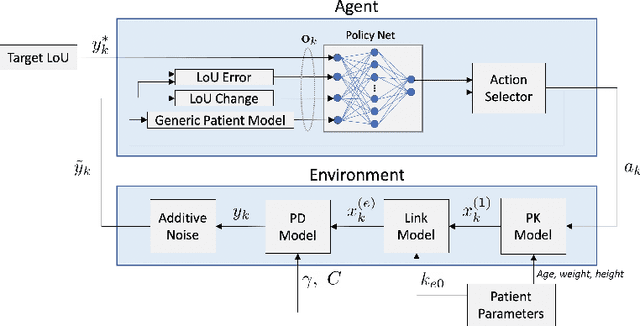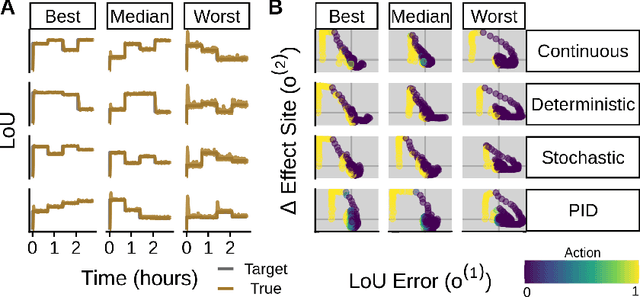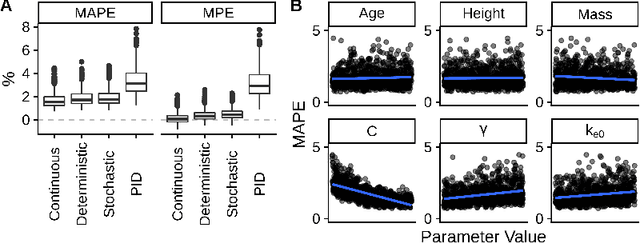Marcus Badgeley
Controlling Level of Unconsciousness by Titrating Propofol with Deep Reinforcement Learning
Sep 09, 2020



Abstract:Reinforcement Learning (RL) can be used to fit a mapping from patient state to a medication regimen. Prior studies have used deterministic and value-based tabular learning to learn a propofol dose from an observed anesthetic state. Deep RL replaces the table with a deep neural network and has been used to learn medication regimens from registry databases. Here we perform the first application of deep RL to closed-loop control of anesthetic dosing in a simulated environment. We use the cross-entropy method to train a deep neural network to map an observed anesthetic state to a probability of infusing a fixed propofol dosage. During testing, we implement a deterministic policy that transforms the probability of infusion to a continuous infusion rate. The model is trained and tested on simulated pharmacokinetic/pharmacodynamic models with randomized parameters to ensure robustness to patient variability. The deep RL agent significantly outperformed a proportional-integral-derivative controller (median absolute performance error 1.7% +/- 0.6 and 3.4% +/- 1.2). Modeling continuous input variables instead of a table affords more robust pattern recognition and utilizes our prior domain knowledge. Deep RL learned a smooth policy with a natural interpretation to data scientists and anesthesia care providers alike.
Wide and deep volumetric residual networks for volumetric image classification
Sep 18, 2017



Abstract:3D shape models that directly classify objects from 3D information have become more widely implementable. Current state of the art models rely on deep convolutional and inception models that are resource intensive. Residual neural networks have been demonstrated to be easier to optimize and do not suffer from vanishing/exploding gradients observed in deep networks. Here we implement a residual neural network for 3D object classification of the 3D Princeton ModelNet dataset. Further, we show that widening network layers dramatically improves accuracy in shallow residual nets, and residual neural networks perform comparable to state-of-the-art 3D shape net models, and we show that widening network layers improves classification accuracy. We provide extensive training and architecture parameters providing a better understanding of available network architectures for use in 3D object classification.
 Add to Chrome
Add to Chrome Add to Firefox
Add to Firefox Add to Edge
Add to Edge